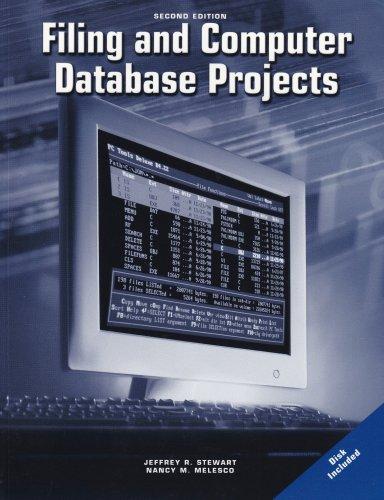Question
Suppose we collected the following Dataset A during 2016. Table 1. Dataset A. Index of Records Rain Sprinkler WetGrass 1 No No No 2 No
Suppose we collected the following Dataset A during 2016.
Table 1. Dataset A.
| Index of Records | Rain | Sprinkler | WetGrass |
| 1 | No | No | No |
| 2 | No | Yes | Yes |
| 3 | No | No | No |
| 4 | No | Yes | Yes |
| 5 | Yes | No | Yes |
| 6 | No | Yes | Yes |
| 7 | No | No | No |
| 8 | Yes | Yes | Yes |
| 9 | No | No | No |
| 10 | No | Yes | No |
| 11 | Yes | No | No |
| 12 | No | No | No |
| 13 | No | No | No |
| 14 | No | Yes | Yes |
| 15 | Yes | No | Yes |
| 16 | No | No | No |
We also collected another Dataset B during 2017.
Table 2. Dataset B.
| Index of Records | Rain | Sprinkler | WetGrass |
| 1 | No | No | Yes |
| 2 | No | No | No |
| 3 | No | Yes | No |
| 4 | No | Yes | Yes |
| 5 | Yes | Yes | Yes |
| 6 | No | Yes | No |
| 7 | No | No | No |
| 8 | Yes | No | Yes |
| 9 | No | Yes | Yes |
| 10 | No | No | No |
These two datasets A and B are independent. We are going to train and test a few classifiers by using these two datasets. That is, given two attributes Rain and Sprinkler, we want to predict if WetGrass is Yes or No.
a) Please illustrate how to use Dataset A to construct a nave Bayesian classifier to predict the label (WetGrass) of the data record X=(Rain = No, Sprinkler = Yes).
Step by Step Solution
There are 3 Steps involved in it
Step: 1

Get Instant Access to Expert-Tailored Solutions
See step-by-step solutions with expert insights and AI powered tools for academic success
Step: 2

Step: 3

Ace Your Homework with AI
Get the answers you need in no time with our AI-driven, step-by-step assistance
Get Started


